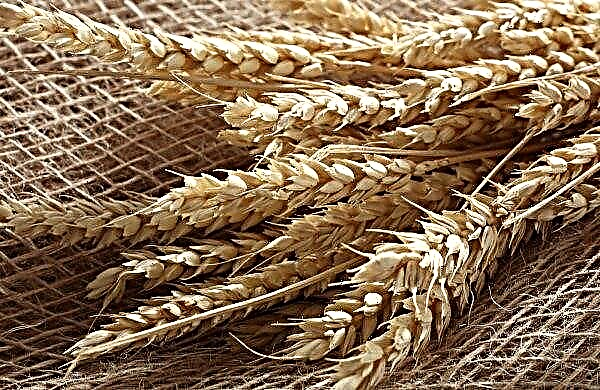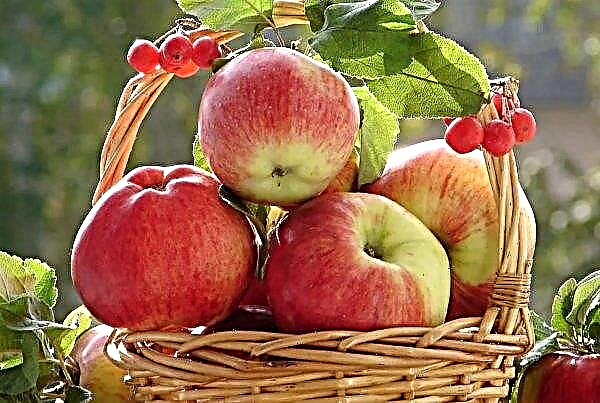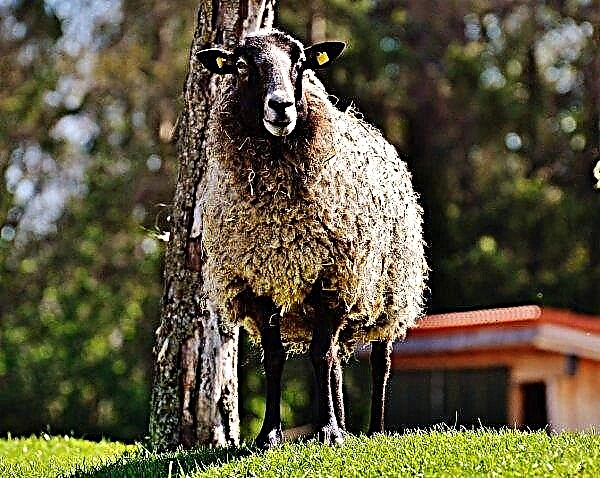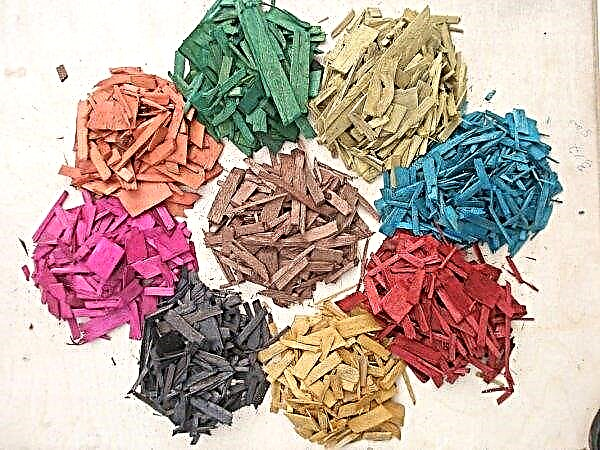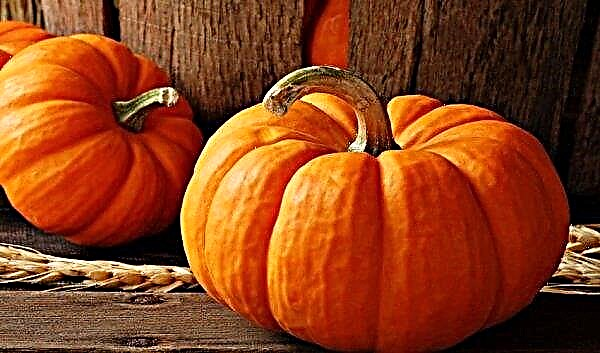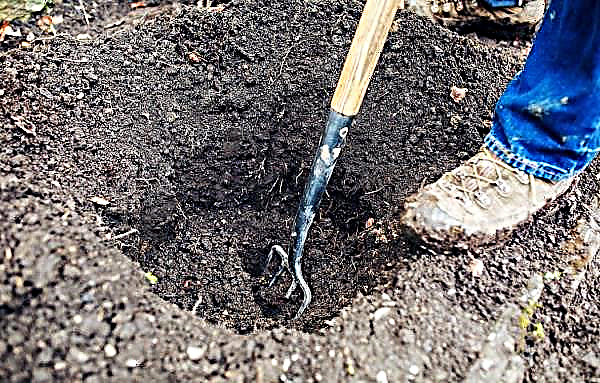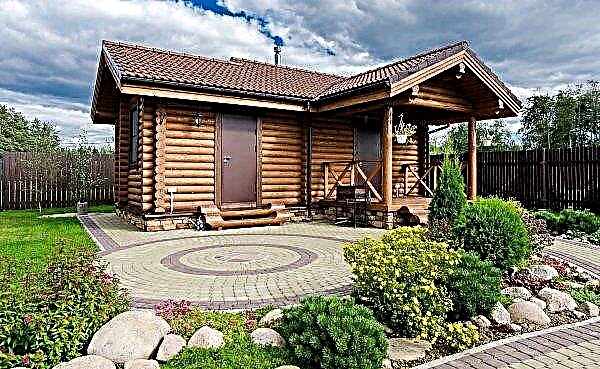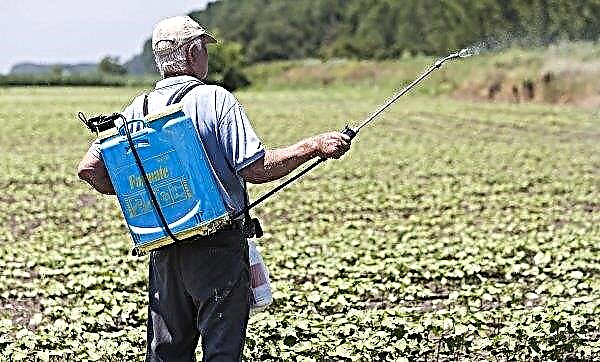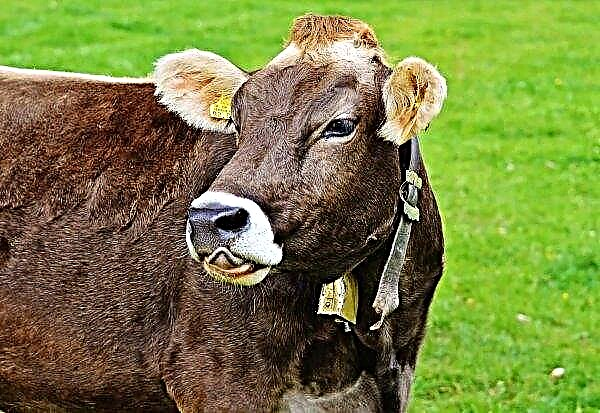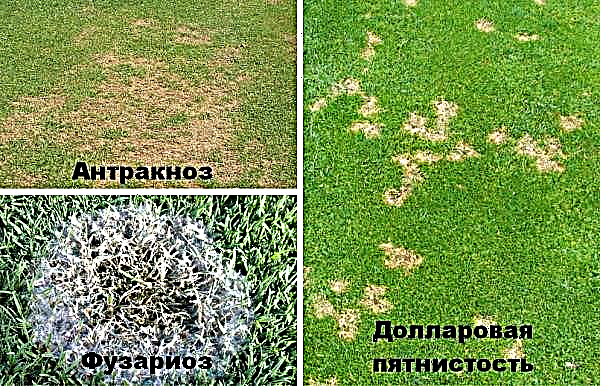It is impossible to imagine our diet without cucumbers, which is why these vegetables can be found in most summer cottages of amateur gardeners. There are many different types of these vibrant green fruits. Let's get acquainted with one of the representatives of the early varieties - cucumber "Artist f1".
Grade description
“Artist F1” was bred for cultivation in greenhouse conditions and in open land, since 2010 it has been zoned in almost all regions of our country.
| Characteristic | Description |
| Breeding (country) | Holland, Warmenhuisen, BEJO ZADEN B.V. |
| Plant type | indeterminate (unlimited growth) |
| Type of pollination | parthenocarpic (self-pollination) |
| Ripening time | early, greenbacks form 38–40 days after seed germination |
| Productivity | an average of 8–9 kg per 1 square meter |
| Bush characteristic | medium and strong growth, medium branching, female type of flower, dark green leaves of medium and large size |
| Weight | on average 90–95 g |
| Length | average 9-10 cm |
| The form | cylindrical, with pronounced tubercles and light, dense pubescence |
| Skin | dark green, with small stripes and faint spots |
| Pulp | crispy with a characteristic aroma and small seed chambers |
| Application | universal. |
Important! The designation “hybrid F1” (first-generation hybrid) indicates that from the seeds collected from these cucumbers, bushes will grow that will not correspond to the characteristics of the parent plant.
Advantages and disadvantages
The advantages of the variety are:
- early ripening;
- good germination of seeds;
- prolonged fruiting;
- lack of yellowing on ripe fruits;
- good tolerance of lack of lighting;
- developed root and resistance to the dry period;
- medium susceptibility to powdery mildew;
- good resistance to cladosporiosis;
- good presentation and versatility.

Among the disadvantages of the variety can be noted:
- not very high productivity;
- exactingness to the feeding regimen.
Sowing seeds for seedlings
Many summer residents prefer to grow seedlings at home and only then transplant it on a permanent bed.
Optimal timing
Seeds for seedlings are sown around the end of April, and seedlings fall on the beds in late spring or early summer after the formation of 3-4 real leaves on them.
Soil mix
The composition of the soil mixture for the seeds of this variety includes peat, humus and sawdust in a ratio of 2: 2: 1. Fertilizers are added to this at the rate of 30 g of nitrophosphate and 40 g of wood ash per 10 l of soil mixture. The composition is mixed, calcined, treated with a disinfectant and poured into containers for seedlings.
The composition is mixed, calcined, treated with a disinfectant and poured into containers for seedlings.
Capacity for growing
For seedlings, you can use low boxes, cups or peat tablets. Boxes or glasses should be pre-treated with a weak solution of potassium permanganate and filled with soil mixture, not reaching 10 mm to the edge. Especially carefully should be processed containers that were already in use.
Seed preparation
Although many believe that seeds purchased in specialized stores do not require pre-treatment, it is still best to carry it out. First you need to sort and remove low-quality, empty or damaged seeds. The remaining ones must be disinfected by soaking for 10-15 minutes in a slightly warm weak solution of potassium permanganate. After that, they are soaked with a growth stimulant, slightly quenched with a periodic change in temperature and left on wet gauze for germination.
Did you know? Cucumber was Napoleon's favorite vegetable. The French commander even announced an award for a way of long-term storage of cucumbers in the conditions of military campaigns. True, it remained unknown whether anyone could get it.
Sowing seeds
Seeds are planted to a depth of about 2 cm in a moist and steamed soil mixture. Disembarkation is made on one grain of tweezers. Cucumber seedlings are fragile, so it is better not to dive. However, when sowing in one big box, picks cannot be avoided. In this case, it is carried out as carefully as possible - about 6-7 days after the appearance of sprouts. It is better not to pull out extra plants, but carefully cut them to the root. By the way, one of the advantages of using peat tablets is that there is no need for a pick.
In this case, it is carried out as carefully as possible - about 6-7 days after the appearance of sprouts. It is better not to pull out extra plants, but carefully cut them to the root. By the way, one of the advantages of using peat tablets is that there is no need for a pick.
Seedling Care
Planted seedlings should be placed in a warm and sunny place, for example, on a windowsill. The most favorable temperature for the emergence of seedlings is + 23 ... 28 ° C. When the seeds have already sprouted, it can be slightly lower - + 20 ... 22 ° C. Seedlings require periodic watering, which is carried out as the upper soil layer dries.
Watering should be very moderate and should be done with slightly warm, standing water. In this case, it is necessary to avoid water getting on the leaves of plants, since this provokes the development of diseases. Before planting on open beds should be carried out 2-3 fertilizing plants. The first time plants are fed after the formation of this leaf with such a mineral composition: ammonium nitrate (7 g), potassium sulfate (8 g), superphosphate (15 g). All this is dissolved in a bucket of water with the addition of a small amount of chicken droppings. The next feeding should be carried out during the second real leaf, and the third - 2 weeks after the first feeding. During these two top dressings, the concentration of mineral components doubles.
The first time plants are fed after the formation of this leaf with such a mineral composition: ammonium nitrate (7 g), potassium sulfate (8 g), superphosphate (15 g). All this is dissolved in a bucket of water with the addition of a small amount of chicken droppings. The next feeding should be carried out during the second real leaf, and the third - 2 weeks after the first feeding. During these two top dressings, the concentration of mineral components doubles.
Seedling hardening
An obligatory step before landing on a permanent bed is the hardening of seedlings. It is held so that the cucumbers rather take root in a new place and give a good harvest. It is necessary to begin hardening 10–14 days before disembarkation into the ground at an outdoor temperature of +12 ... + 14 ° С.
The process consists in the fact that the seedlings of cucumbers are exposed to fresh air for 2-3 hours and every day this period is extended by another 1-2 hours. At the end of the hardening process, the plants should already be on the street constantly. After spending 2-3 nights, cucumbers are ready for a transplant.
Planting seedlings in a permanent place
Cucumbers are planted in the ground when 4 real leaves appear on them. This usually occurs in late spring or early summer. You need to plant it in a prepared fertile and well-drained soil. Usually fertilizers are added to it in the fall, weeds are removed and everything is dug up. The optimum temperature at the time of transplanting: soil - +15 ° C, air - +22 ° C. But, despite the temperature, at first, it is better to shelter seedlings in order to protect from possible cold snap. Seedlings are planted to a depth of 12 cm and at a distance of about 25 cm from each other. In the wells should be one plant.
The optimum temperature at the time of transplanting: soil - +15 ° C, air - +22 ° C. But, despite the temperature, at first, it is better to shelter seedlings in order to protect from possible cold snap. Seedlings are planted to a depth of 12 cm and at a distance of about 25 cm from each other. In the wells should be one plant.
Important! It is impossible under growing cucumbers use the same site for more than five consecutive years. This will result in a low yield.
Landing immediately in open ground
Characteristics of the “Artist f1” cultivar make it possible to sow it immediately on an open bed, without the stage of growing seedlings.
Optimal timing
Sowing is carried out approximately in May or June in the soil moistened and warmed up to +15 ° C. At first, it is better to cover the beds with agrofibre, which will help protect them from return frosts. In cold places, cucumbers are usually planted in greenhouses. To accelerate the emergence of seedlings, you can pre-germinate the seeds by spreading them on a damp cotton cloth or moistened small sawdust. Seeds germinate at temperatures around +25 ° C. When the root is half the length of the seed, the plants are planted on an open bed.
Seat selection
This variety must be planted in nutritious loose soil that retains moisture well. It is advisable that the groundwater is not too close to the surface of the earth, since they do not allow the soil to warm up well. Otherwise, you can arrange for the cucumbers the so-called "warm bed". To do this, straw or mowed grass mixed with chicken droppings or manure dissolved in water is laid in advance at a depth of 30–35 cm.
Rotting, this mixture will begin to produce heat. The site chosen for the “Artist” should be well lit and protected from strong winds and drafts. Although, according to the experience of many gardeners, the described variety is not too picky and develops well in a slightly shaded place. It is also very important with which plants cucumbers will be adjacent. They should be planted next to, for example, corn, which will protect cucumbers from a hot day and will become an additional support for them. Also, this culture is well adjacent to cabbage, beets, legumes, onions and dill. But if cucumber varieties that are pollinated by bees grow on the plot, then it is better to place them at some distance from each other, otherwise the fruits of the “Artist” may begin to be bitter. Also, do not choose a site where other varieties of cucumbers, as well as zucchini or squash, grew in the past season.
They should be planted next to, for example, corn, which will protect cucumbers from a hot day and will become an additional support for them. Also, this culture is well adjacent to cabbage, beets, legumes, onions and dill. But if cucumber varieties that are pollinated by bees grow on the plot, then it is better to place them at some distance from each other, otherwise the fruits of the “Artist” may begin to be bitter. Also, do not choose a site where other varieties of cucumbers, as well as zucchini or squash, grew in the past season.
Scheme and depth of landing
Seeds are planted to a depth of 3-4 cm at a distance of 6-7 cm from each other. If possible, it is best to place the seeds at an angle of 45 ° with a pointed tip up: this will facilitate the sprout's access to the surface of the earth. To retain moisture, the beds must be covered with mulch 3-5 cm thick.
How to care for crops
Cucumber belongs to stress-resistant hybrids and quickly adapts after planting.
Watering
The “Artist f1” cucumbers really need moisture, especially during the period when the ovary appears and the fruit ripens. The lack of moisture immediately affects both the number of ovaries and the appearance and taste of the fruit. Unlike some other varieties, "Artist" can withstand a short absence of moisture and is well restored, but do not abuse it. Water the plants as necessary with room or slightly warm water, which can be warmed up in the sun. From cold water, cucumbers can develop poorly, begin to hurt, gray rot appears on them. Watering should only be under the root and try to ensure that water does not fall on the leaves.
Water the plants as necessary with room or slightly warm water, which can be warmed up in the sun. From cold water, cucumbers can develop poorly, begin to hurt, gray rot appears on them. Watering should only be under the root and try to ensure that water does not fall on the leaves.
Did you know? Cleopatra considered the daily use of cucumbers the key to her unsurpassed beauty. And Christopher Columbus appreciated them for the prevention of scurvy on long sea voyages.
Top dressing
Over the entire fruiting period, cucumbers should be fed 4–5 times, since a lack of nutrients leads to yellowing of the leaves and loss of ovary. Sometimes, even by the shape of the fruit, it is possible to determine which mineral is missing in the soil. Thus, calcium deficiency is expressed in the pear-shaped form of cucumbers, and the appearance of a "beak" signals a nitrogen deficiency.
The first feeding should be carried out after the formation of the first true leaves. For it, 10–12 g of superphosphate, ammonium nitrate and potassium sulfate should be dissolved in 10 l of water. The resulting product needs to water the roots of plants. During the entire growing season, mineral fertilizing should alternate with organic. If the soil is not fertile enough, then it is necessary to feed it. For this, 1 kg of cow manure is poured with a bucket of warm water and infused for 10-12 days. Further, fertilizers should be diluted with water 10 times, adding a handful of ash to 10 liters of water, and water the beds. Foliar top dressing can be carried out with preparations of Plantafol, Terraflex, Megafol or Isabion, which should be applied in the evening.
If the soil is not fertile enough, then it is necessary to feed it. For this, 1 kg of cow manure is poured with a bucket of warm water and infused for 10-12 days. Further, fertilizers should be diluted with water 10 times, adding a handful of ash to 10 liters of water, and water the beds. Foliar top dressing can be carried out with preparations of Plantafol, Terraflex, Megafol or Isabion, which should be applied in the evening.
Bush formation
This procedure allows you to regulate bush growth and fruit development. Experts recommend forming each bush in one stalk and timely pinching. The central stem is pinched after the sixth leaf, which provokes active flowering and the appearance of new shoots. If the bush exceeded the height of the supporting grid by 20–25 cm, it should also be pinched. Side stems are nipped at a height of about 0.5 m.
Soil care
From time to time, the soil around the bush needs to be loosened and slightly hilled, and weeds should be weeded. All this will protect the root system of cucumbers and will contribute to their favorable growth. However, during weeding, you should be very careful, because the roots of the plant are located quite close to the surface.
Also, to protect the soil from drying out and reduce the amount of watering will allow mulching the beds with a dense layer of mulch - straw, leaves. This will help retain moisture and eliminate the need to fight weeds and loosen the soil.
Bush tying
"Artist f1" refers to those varieties that are highly branched, so his bushes need to be tied up. This will allow the air to circulate well between the plants, it is better for them to warm up and not to mess with each other. To do this, you can put cucumbers on a grid or a trellis with twine or wire stretched every 25-30 cm. The full height of such an emphasis should reach 1.8–2 m. Then the stems will stretch in the right direction and not cling to neighboring plants.
Video: how to tie cucumbers in the open ground
Preventative treatment
Cucumber "Artist" is characterized by good resistance to many diseases, however, for prevention it is better to treat it with Topaz or Strobi from time to time. Sometimes, especially with high humidity, slugs may appear on the site. To get rid of them, you should treat the beds with wood ash or tobacco dust. This should be done in the early morning or late evening, when slugs are on the surface of the earth.
Important! After the beginning of fruit formation, it is better not to carry out the processing of plants with chemical preparations. But if such a need arose, then you should not eat 3-4 harvests of fruit.
If this remedy does not work, then it is worth using preparations with metaldehyde. The following folk remedy will help get rid of aphids that appeared on cucumbers - dissolve in a bucket of water (55–60 ° C) about 10–12 g of red pepper and 200–250 g of tobacco dust, cool and treat the affected bushes. Against ticks, the treatment of bushes with colloidal sulfur will help. You can also use insecticides - "Actellik" or "Confidor".
Harvesting
Fruits are considered ripened and ready to harvest when they reach a size of 9-10 cm. Cucumbers grow quite quickly, so it is better to collect them daily, in extreme cases - once every two days. It should be noted that overripe fruits not only lose taste, but also significantly inhibit the growth of a new ovary. Cucumber "Artist" won the love of many summer residents by the fact that it ripens early, grows in the greenhouse and in the garden and bears fruit in almost all regions. Now you know the rules for growing it, and with a little effort, you can certainly please your home with fresh and crisp green fruits.
Cucumber "Artist" won the love of many summer residents by the fact that it ripens early, grows in the greenhouse and in the garden and bears fruit in almost all regions. Now you know the rules for growing it, and with a little effort, you can certainly please your home with fresh and crisp green fruits.

